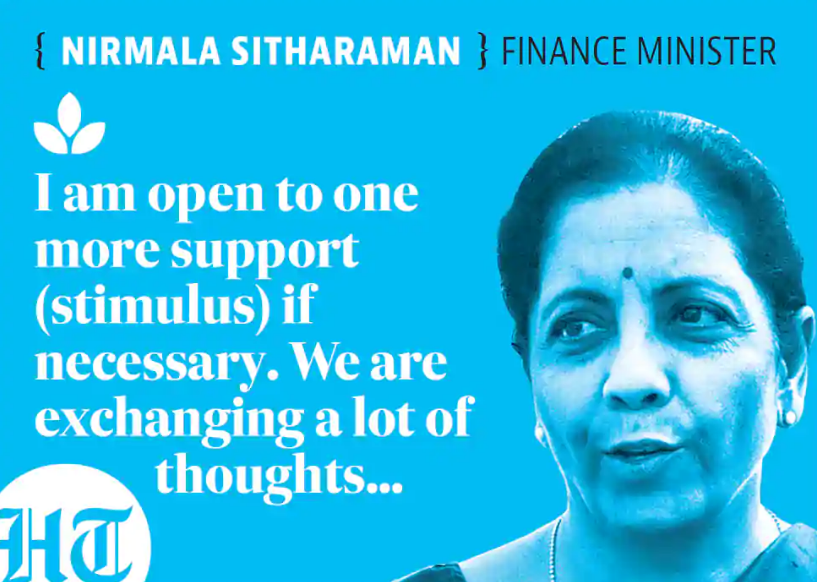Nirmala Sitharaman said that while the decline in GDP in the first quarter of 2020-21, at 23.9%, has been substantial, she does not want to conclude anything about the entire year’s number just yet.
Finance minister Nirmala Sitharaman said she is not being “risk averse” in her response to coping with the economic impact of the Covid-19 pandemic and the 68-day lockdown imposed to slow its spread, which saw India’s economy come to a near-complete halt for part of the first quarter of 2020-21.
She added that she has no option but to increase government spending. “After all, among the four engines that support the economy, three have come to a complete standstill. It is public expenditure which has to do the heavy lifting.” The government’s borrowing calendar that has already been announced indicates as much, Sitharaman said. The government has already raised its gross market borrowing target for the year to Rs12 lakh crore from the Rs7.8 lakh crore announced in the Union Budget in February. Debt market analysts expect a further increase in this to Rs13 lakh crore.
The government’s relief package announced in May has been criticised for not having an adequate direct fiscal stimulus component and not doing enough to spur demand, but in an interview to HT, the finance minister said that she believes it does enough for both supply and demand. Still, she admitted, she has been receiving feedback from industry on the need for one more stimulus. “One more may be needed is what we are hearing from the people who interact with us, and we are trying to see what it is that we can do.” Sitharaman said, like she has several times in the past, that she is open to providing more support but declined to get into details of when this might be forthcoming. “There’s no point in me hurriedly getting something out.”
She also refused to get into a guessing game on this year’s GDP. Sitharaman said that while the decline in GDP in the first quarter of 2020-21, at 23.9%, has been substantial, she does not want to conclude anything about the entire year’s number just yet. She added that she expects the second and third quarter of the financial year to be better.
Most analysts expect the country’s GDP to shrink by at least 5% and as much as 10% in 2020-21.
But things are getting better, the minister insisted, referring to conversations she has been having, with some industry representatives who are telling her that their sectors have reached pre-pandemic levels of production. Numbers bear out some of that. The latest value of the Nomura India Business Resumption Index was 82.3 on September 20, where 100 is the pre-pandemic level of business. The index has been steadily inching upward. “The revival is also happening in many labour intensive areas. This is also corroborated by the fact that migrant workers from many states have started going back (to their places of work),” Sitharaman said.
HT reported on Monday that demand for jobs under the schemes has dipped, and surmised that this could be because some migrant workers have returned to their places of work in the cities. The minister singled out the agricultural sector (which grew 3.4% in the first quarter) as a symbol of resilience and talked up the farm reform laws passed by the government last week, even as she criticised the Opposition, and especially the Congress party, for opposing them.
Responding to a question on the future of the economy, she said she is “ hopeful — that the coronavirus will recede, and the Indian entrepreneur, small big, medium, will succeed” but added that Ladakh, where the Indian and Chinese armies are in a face-off following transgressions by the latter “ is one imponderable”.








Comments (0)